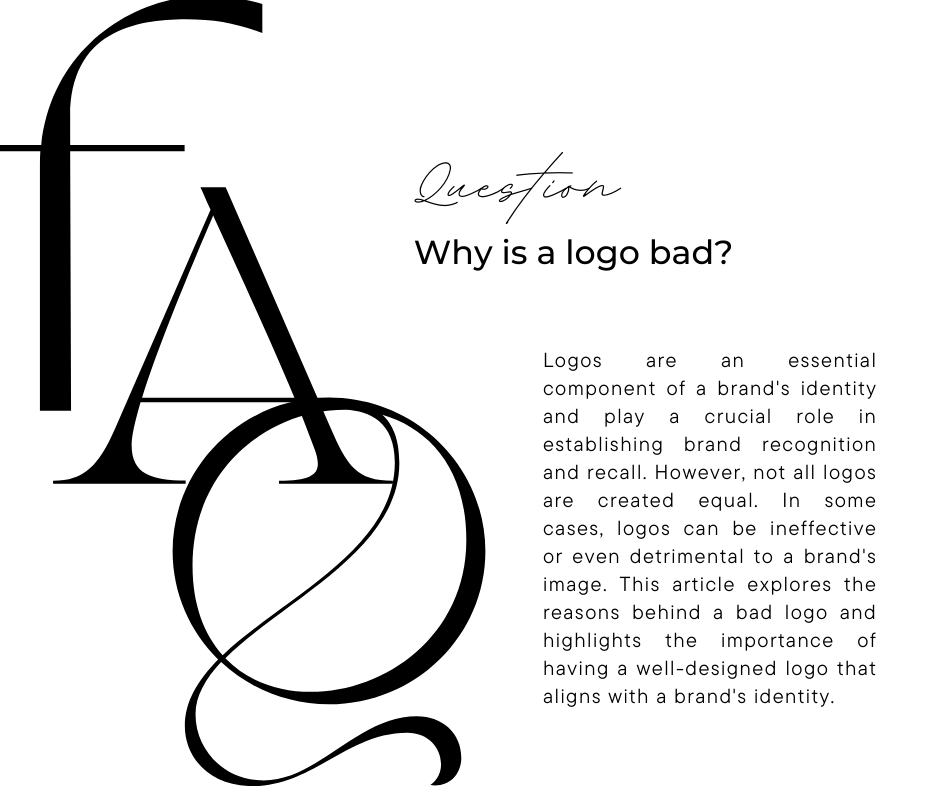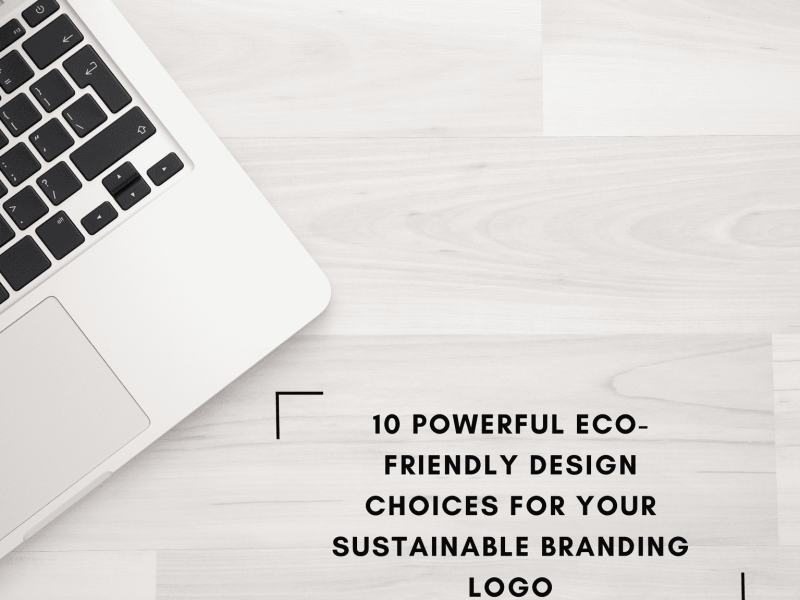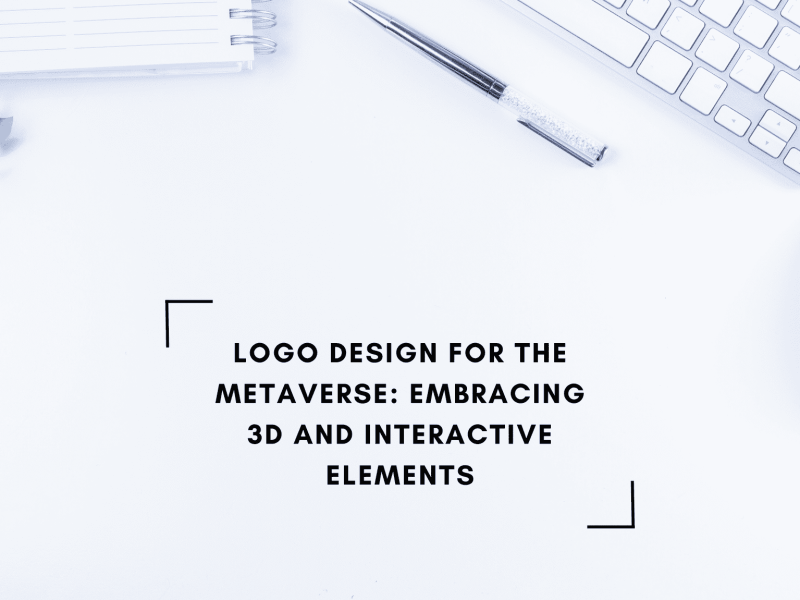Why is a logo bad?
Introduction
In order to develop brand awareness and recall, logos are a critical element of a brand’s identity. But not every logo is made equally. In some circumstances, logos may be useless or even harmful to the perception of a company. This article examines the causes of poor logos and emphasizes the significance of having a well-made logo that is consistent with a brand’s identity.
What is a logo?
A logo is a graphic representation that acts as a mark or emblem to distinguish a product, business, or organization. It frequently makes use of unusual and memorable font, colors, forms, and symbols. A well-designed logo communicates a brand’s beliefs, personality, and products. It captures the spirit of the company.
Importance of a logo
A logo serves as a visual representation of a brand’s identity and is its face. It contributes significantly to brand identification and recall, setting a brand apart from its rivals. A skillfully designed logo has the power to arouse favorable feelings, establish trust, and leave a long-lasting impact on customers. It is essential for fostering brand loyalty and drawing in target markets..
Signs of a bad logo
Not every logo successfully achieves what it was designed for. Here are several indicators that a logo could be viewed as being poor or ineffective:
Lack of simplicity
A good logo must to be uncomplicated and identifiable. Viewers may become perplexed by complex designs or crowded aspects, which will make it more challenging for them to recall or recognize the brand. A logo must to be aesthetically appealing and reflect the spirit of the company using simple and unambiguous design components.
Poor typography
The use of typography is essential while creating logos. The fonts used should reflect the brand’s personality and sector. A logo’s use of uneven or incorrect typography might damage the brand’s reputation for professionalism and reliability.
Ineffective color choice
Colors have an emotional and psychological effect on people. A terrible logo may include colors that are off-putting, discordant, or unpleasant, which will cause people to associate the business negatively. The brand’s values and target market should be reflected in the color scheme, which should elicit the intended feelings and perceptions.
Lack of scalability
A logo has to be adaptable and keep its aesthetic impact in a range of sizes and forms. When a logo is resized or replicated in several formats, it may lose its clarity or become unintelligible, which can reduce brand recognition and consistency.
Lack of versatility
A good logo should be flexible enough to work on many platforms and apps. It can be difficult for a business to build a consistent visual identity if a logo doesn’t perform effectively across different marketing materials, such as websites, social media accounts, or goods.
Absence of relevance
The goal, sector, or values of the brand should be reflected in the logo. The capacity of a business to draw in and keep customers may be hampered if its logo lacks meaning or fails to connect with its intended demographic.
Inconsistency in branding
It’s possible that a poor logo will not complement the firm’s entire visual identity and brand standards. Color, typeface, and design inconsistencies can lead to a disconnected brand experience, which can affect the company’s reputation and awareness.
Poor execution
A logo might lose its effectiveness even with a well-thought-out design if it is badly implemented. Low-quality images, pixelation, or amateurish design methods can lessen the impact of the logo and give it an unprofessional appearance.
Negative connotations
It’s possible for logos to accidentally transmit unpleasant associations or connotations in some situations. This might happen as a result of cross-cultural miscommunication, visual resemblances to unrelated ideas, or contentious images. To make sure a logo doesn’t arouse unwanted unfavorable perceptions, it should undergo careful investigation and analysis.
Impact on brand perception
The way that people view a brand might suffer from a poor logo. It might cause doubt, mistrust, or apathy, which makes it harder for the business to draw in new customers and keep them coming back. A logo should reflect the brand’s intended image, exude professionalism, and inspire confidence.
The role of a professional designer
It is crucial to seek the advice of a qualified logo designer if you want to avoid the hazards of a poor logo. A professional designer has the knowledge, abilities, and experience necessary to produce a logo that accurately captures the essence of the brand, is consistent with its guiding principles, and appeals to the intended market. Their familiarity with design fundamentals, industry trends, and consumer psychology guarantees the production of a logo that enhances the brand’s reputation and distinguishes it from rivals.
Conclusion
A logo is an essential part of a brand’s identification, and a poor logo can have serious repercussions. By being aware of the warning signs of a poor logo and appreciating the value of expert design, companies can guarantee that their logo accurately captures their identity, appeals to their target market, and adds to their overall success.
FAQs
Q: How can a bad logo impact a brand’s credibility? A: A poor logo might provide the wrong impression about a company, making it seem amateurish, unreliable, or unimportant. This might damage the reputation of the company and turn off potential consumers.
Q: Can a bad logo be redesigned? A: Yes, a poor logo may be improved by redesigning it. An expert logo designer may assist with a redesign to make sure the logo is consistent with the brand’s identity and clearly expresses its values.
Q: Why is simplicity important in logo design? A: A logo’s simplicity makes it simple to recognize and remember. A straightforward logo has a higher chance of being recalled by viewers and may successfully convey the essence of the company in a visually attractive way.
Q: What should I consider when choosing colors for a logo? A: Think about the brand’s industry, target market, and intended emotions while selecting colors for a logo. The correct connotations and resonant colors for the brand’s identity and mission should be used.
Q: Is it necessary to hire a professional designer for a logo? A: While designing a logo on your own is a possibility, working with a professional designer guarantees knowledge of design principles, market trends, and brand strategy. A skilled designer can produce a logo that complements your brand and successfully conveys your message.



